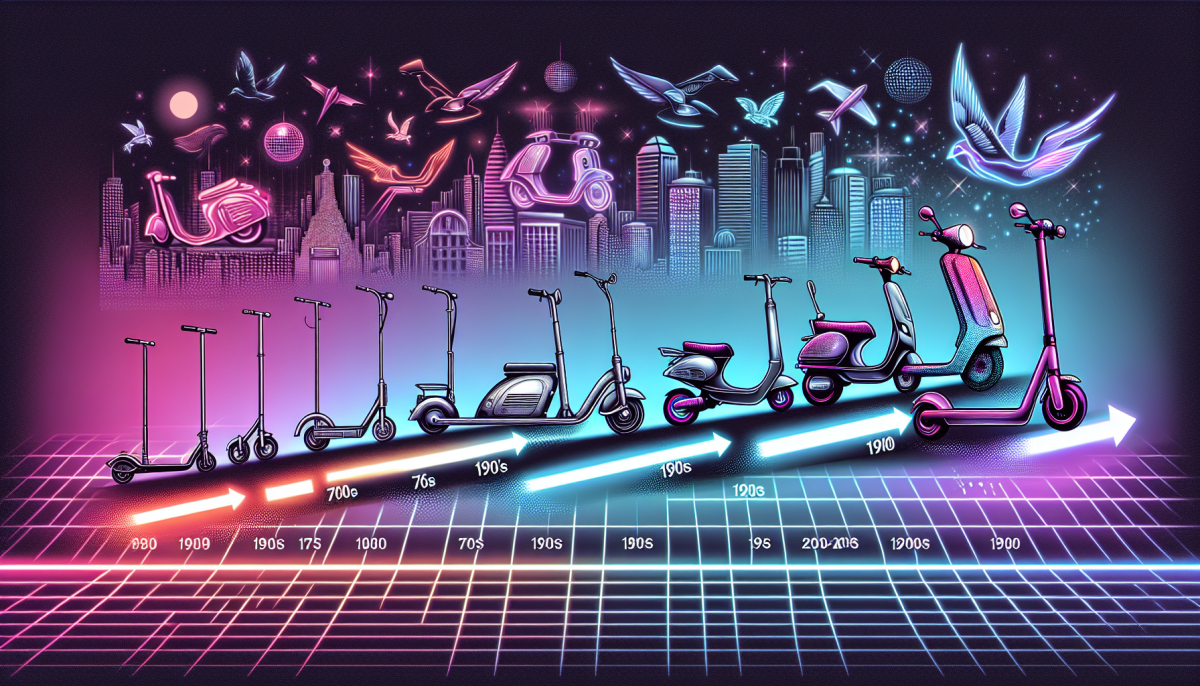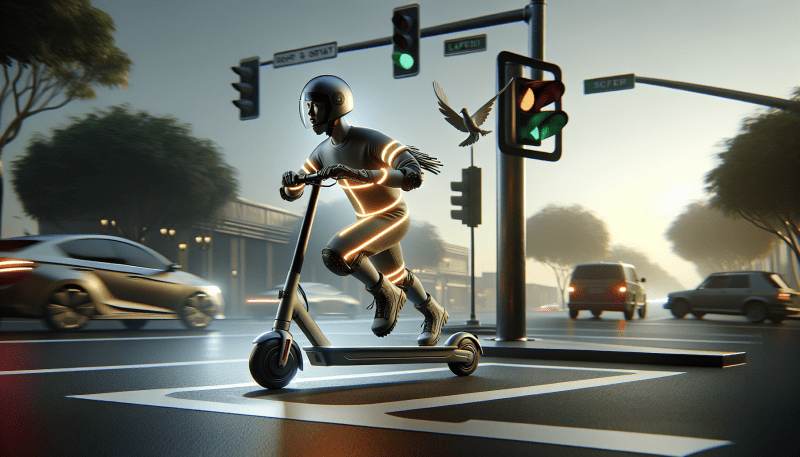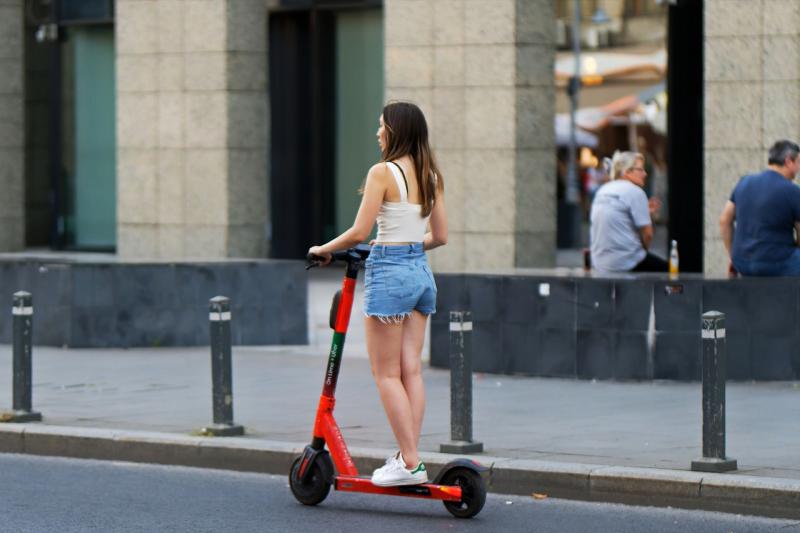The journey of electric scooters began in the late 19th century when inventors started exploring the concept of personal transportation. The first known electric vehicle was created in 1834 by Thomas Davenport, an American blacksmith. While it was not an electric scooter per se, his creation marked the beginning of using electricity for transportation. As technology evolved, so did the ideas around personal vehicles, paving the way for the development of electric scooters.
Fast forward to the early 20th century, the introduction of electric bicycles and scooters began to gain attention. These early electric scooters were quite different from what we see today. They were primarily designed for short distances and used lead-acid batteries that were heavy and required frequent recharging. Nevertheless, they laid the groundwork for the electric scooters we are familiar with now, highlighting an emerging demand for eco-friendly and affordable personal transportation options.
By the late 1990s and early 2000s, advancements in battery technology, particularly with the rise of lithium-ion batteries, significantly impacted the design and functionality of electric scooters. The lightweight and efficient batteries allowed for longer ranges and faster speeds, making electric scooters more appealing to commuters. This era marked the start of a small-scale production of electric scooters aimed at urban dwellers seeking a convenient mode of travel while reducing their carbon footprint.
During the late 2000s and into the 2010s, electric scooters gained further popularity, particularly in cities facing issues like traffic congestion and pollution. With the emergence of high-tech features, such as smart connectivity and advanced safety mechanisms, electric scooters began to attract a broader audience. The combination of innovation and sustainability truly set the stage for the electric scooters revolution we are witnessing today.
Milestones in Electric Scooter Development
The journey of electric scooters has been marked by significant milestones that have shaped their evolution into a popular mode of urban transport. It all began in the late 19th century, when inventors first experimented with small electric vehicles. These early designs laid the groundwork for what would become modern electric scooters. In the 1970s, the introduction of better battery technology made it possible to create more efficient and user-friendly electric scooters, paving the way for the future.
Fast forward to the 1990s, when the electric scooter market began to emerge more distinctly. Companies like Razor popularized the concept, launching models that appealed to both children and adults. These electric scooters featured foldable designs and lightweight materials, making them portable and easy to use. This was a turning point, as electric scooters started gaining traction as a fun and eco-friendly mode of transportation for short distances.
The 21st century brought even more innovation, with technological advancements such as lithium-ion batteries and improved electric motors. This led to the release of more powerful and longer-range electric scooters, capable of reaching speeds previously thought impossible. In 2017, shared mobility services began to emerge, offering electric scooters for rent through smartphone apps. This convenience brought the electric scooter into the mainstream, attracting a new wave of users and significantly altering urban commuting patterns.
Today, electric scooters continue to evolve with features such as smartphone integration, GPS tracking, and better safety measures. Cities around the world are adapting their infrastructure to accommodate this growing trend, with dedicated scooter lanes and parking areas. With a focus on sustainability and urban mobility, electric scooters have secured their place in the future of transportation, reflecting their remarkable development over the years.
Rising Popularity and Urban Impact
The rise of electric scooters has transformed urban transportation in recent years. As cities become increasingly congested and environmental concerns grow, more people are turning to electric scooters as a convenient and eco-friendly alternative for short commutes. With their compact design and ease of use, electric scooters are becoming a common sight on city streets, offering a fresh mode of transport for residents and tourists alike.
The impact of electric scooters on urban life is profound. They provide a quick way to navigate busy streets, reducing reliance on cars and public transit. This has led to decreased traffic congestion and fewer emissions in densely populated areas. Many cities have leaned into this trend, implementing scooter-sharing programs that allow users to rent scooters on-demand. This accessibility encourages more people to leave their cars at home, further supporting sustainability efforts in urban planning.
Additionally, electric scooters have fostered a sense of community among users. Riders often share tips and routes with one another, promoting a culture of exploration in local neighborhoods. As more people embrace this mode of transport, we see increased foot traffic in areas that were previously overshadowed by heavy vehicular traffic. Local businesses are benefitting from the influx of customers arriving on electric scooters, creating a vibrant atmosphere in urban centers.
However, the growing popularity of electric scooters also brings challenges for city officials. As usage increases, issues such as sidewalk clutter, safety concerns, and regulations come to the forefront. Cities are working to establish guidelines that ensure the responsible use of electric scooters while maximizing their benefits. Balancing accessibility and safety will be key as electric scooters continue to shape the landscapes of urban areas around the world.
Future Trends in Electric Mobility
The landscape of electric mobility is evolving rapidly, and electric scooters are at the forefront of this revolution. As technology advances, we can expect to see even more innovations that enhance the performance, safety, and accessibility of electric scooters. From improved battery life to integrated smart technology, the future promises to make electric scooters an even more appealing option for urban transportation.
One exciting trend on the horizon is the integration of artificial intelligence and smart connectivity in electric scooters. These scooters will not only help users navigate through busy streets but will also offer real-time data on traffic conditions, nearby charging stations, and optimal routes. Imagine hopping on an electric scooter that knows the best path to reach your destination while avoiding congested areas!
Shared mobility solutions are also expected to gain traction. Companies are continuously experimenting with electric scooter-sharing platforms, enabling users to find scooters near them with just a tap on their smartphones. This convenience could substantially reduce traffic congestion in cities while promoting sustainable transport options. As electric scooter-sharing becomes more commonplace, we might see improved infrastructure, such as dedicated lanes and parking spots, making it easier than ever to embrace this eco-friendly travel choice.
Lastly, sustainability will play a key role in the future of electric scooters. Manufacturers are likely to focus on using recycled materials and developing environmentally friendly manufacturing processes. As consumers become more eco-conscious, electric scooters that prioritize sustainability will not only be better for the planet but also more attractive to environmentally aware buyers. With these trends, electric scooters are set to redefine urban mobility and make daily commutes smoother and greener.



